Turkmenistan is not cool.
Part 1: The Gates of Hell
I didn’t know much about Turkmenistan until it was offered as a possible add-on to my Nomad Train adventure. Per usual, I said “yes,” without much research or forethought. A friend had told me that it was difficult to get in, à la North Korea, which only added to the allure.
Sure enough, a day before our trip, our tour leader informed us that 7 out of our group of 10 applicants were denied a letter of invitation. I was one of the lucky three to be invited. Now my interest was truly piqued.
While our friends scrambled to re-book flights, the three of us headed off on our 5-day excursion into the closed state of Turkmenistan. From the get-go, the border crossing was tense.
We arrived late (a confusion with the pick-up time), there was a problem with my visa (self-inflicted), and another delay for our host to gather provisions once we got through immigration. Finally, after a 6-hour delay, we were off toward our first destination: The Gates of Hell.
The Gates to Hell Are Open
Generally speaking, man-made environmental disasters aren’t high on my list to visit. So I approached our first stop, the Darvaza gas crater, known as The Gates to Hell, with some trepidation.
Located in the middle of the Karakum desert, Darvaze is a burning natural gas field formed after a drill punctured a natural gas cavern. Engineers then ignited the crater to prevent poisonous gases from spreading. The accident happened in 1971, so the fire has been burning for 54 years.
Today, the crater, 60–70 meters (200–230 ft) in diameter with a depth of about 30 meters (98 ft), is only about 10% of its original size. The government had been filling in the hole, but elected to keep the last bit of flames alive as a tourist attraction.
The fire is expected to be fully extinguished within the next few years. Which, frankly, is probably a good idea since the entire area seems unstable. Like when a local guide dug a little hole near the rim and set the escaping fumes alight for the delight of “his tourists.”
The Road to Hell is Long
As devilish infernos go, the Gates of Hell are pretty much the real thing. But nearly as diabolical were the “paved” roads that got you to Hell and back. We spent more than 10 hours navigating the highway and its own crater-sized potholes.
Video: Katharine Ferrier
The condition of the road was surprising since Turkmenistan is seen (by the World Bank) as an upper-middle-income nation, with sizeable wealth generated by its natural gas reserves. So it seems like a strange choice for the government not to repair this road.
The highway between the capital, Ashgabat, and the country’s second city, Turkmenabat, is in similarly poor condition. Since most people either fly or take the train between the cities, only long-haul trucks (and us) use the pitted road. It was another long 6 hours of a bumpy-ass ride.
The Massacre at Merv
We were navigating this second Hellish road to get to Merv, an oasis and ancient stop on the Silk Road, located outside the present-day city of Mary.
Merv was the point where multiple strands of the Silk Road converged. It was also the seat of the Seljuk empire, which encompassed all of Iran, Mesopotamia, and Syria, as well as Palestine and parts of Egypt, for more than 4,000 years.
During its prime around the 10th century, Merv was believed to be the biggest city in the world and a bastion of culture and literacy. It was ultimately ravaged by Genghis Khan and his army, who killed more than 700,000 in a week as they lay siege to the city. The vanquishing of Merv is still considered one of the worst wartime massacres.
Today, Merv is a collection of archaeological sites that are mostly undisturbed, still buried under the shifting sands of the desert. Whole villages and cemeteries exist on top of the ruins.
The sultan’s mausoleum is standing, and we could see remnants of the citadel wall, the central mosque, and a larger shelter with a courtyard. Bits of brickwork and pottery can be seen protruding from mounds of hard sand, promising a rich archeological dig beneath.
Again, it struck me as curious that the government has decided not to develop this rich vein of history and culture, leaving most of the land virtually untouched. Instead, the government is relying on nature and the preserving power of sand to keep the ancient city’s secrets.
Shifting Priorities
These two sites are such a contrast. The Gates of Hell, a man-made environmental disaster. And Merv, a rich, culturally significant site of one of the most advanced, ancient civilizations in the world. Both located deep within the desert, fading away amidst the sand and sun.
Then it occured to me—these sites represent how the Turkmenistan government thinks, what it values, and how it wants to present itself to the world.
I came to see it as an emphasis on flash over substance, which is pretty much the main theme in Turkmenistan. A motif that really snapped into focus when we arrived in Ashgabat, Turkmenistan’s capital, known as “The White City.”
This is part 1 of a 2-part post “Turkmenistan is not cool: The Gates of Hell.”
Read part 2: Turkmenistan is not cool: Optional Illusions
Have you ever traveled to a spot that left you scratching your head? What did you do to help you process it all?
If you like this essay, please leave a comment or share it with others. This will help more readers find my work. 🦋 Thank you!
Christened “Wander Woman” by National Geographic, Erin Michelson is a professional speaker and author of the Nomad Life™ series of curated trips and travel guides, including the #1-ranked “Explore the World with Nomads.”



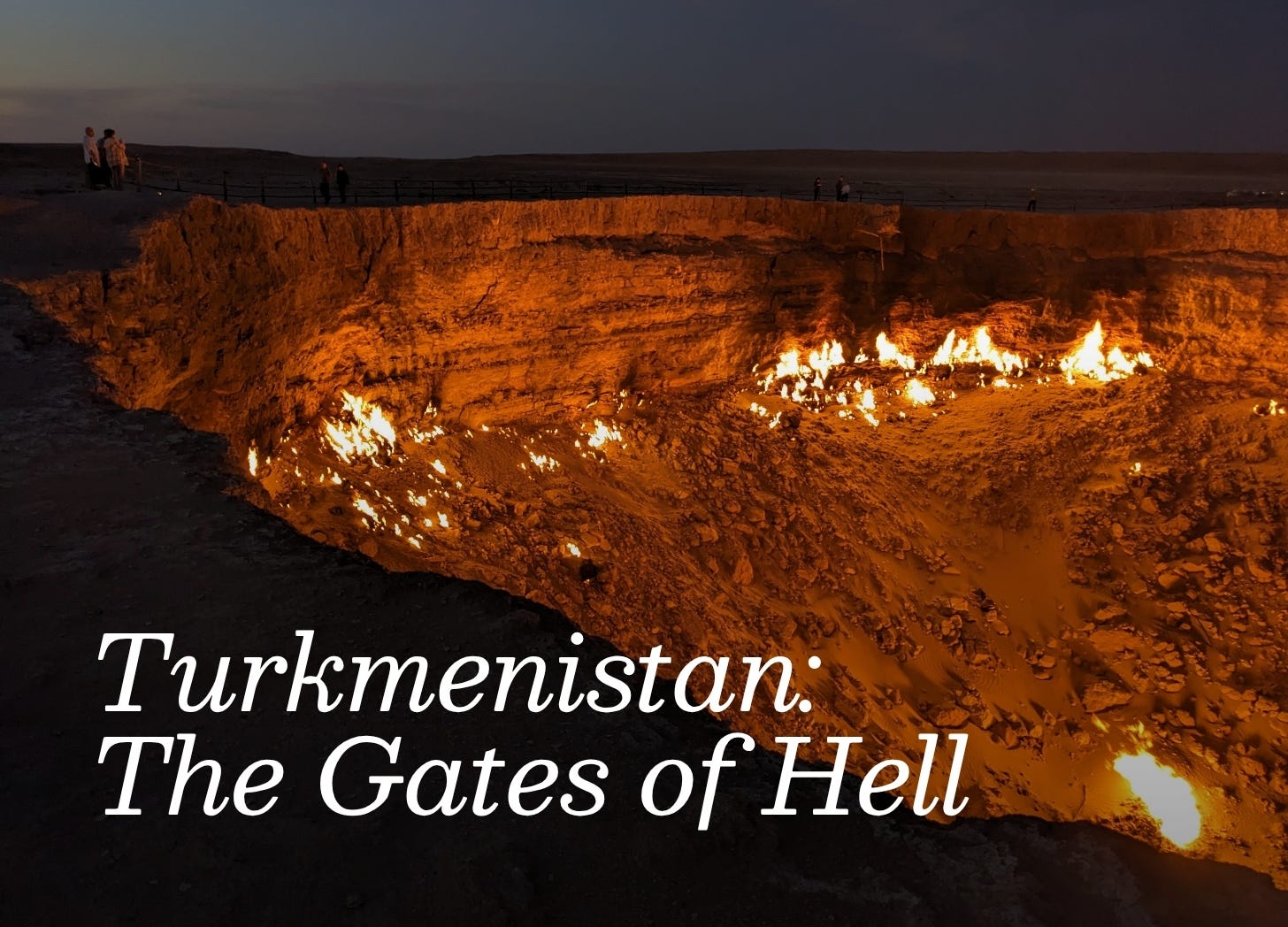
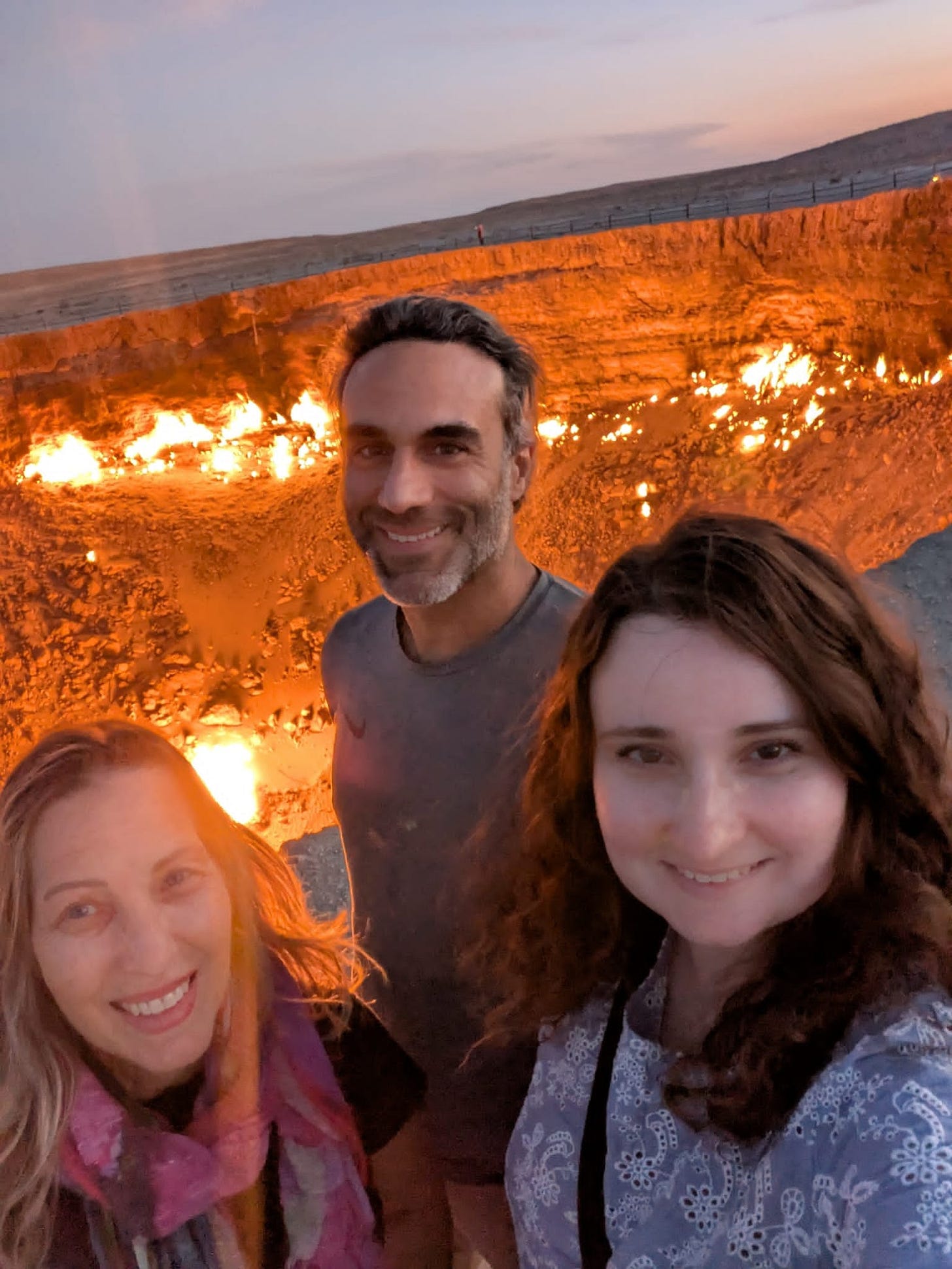
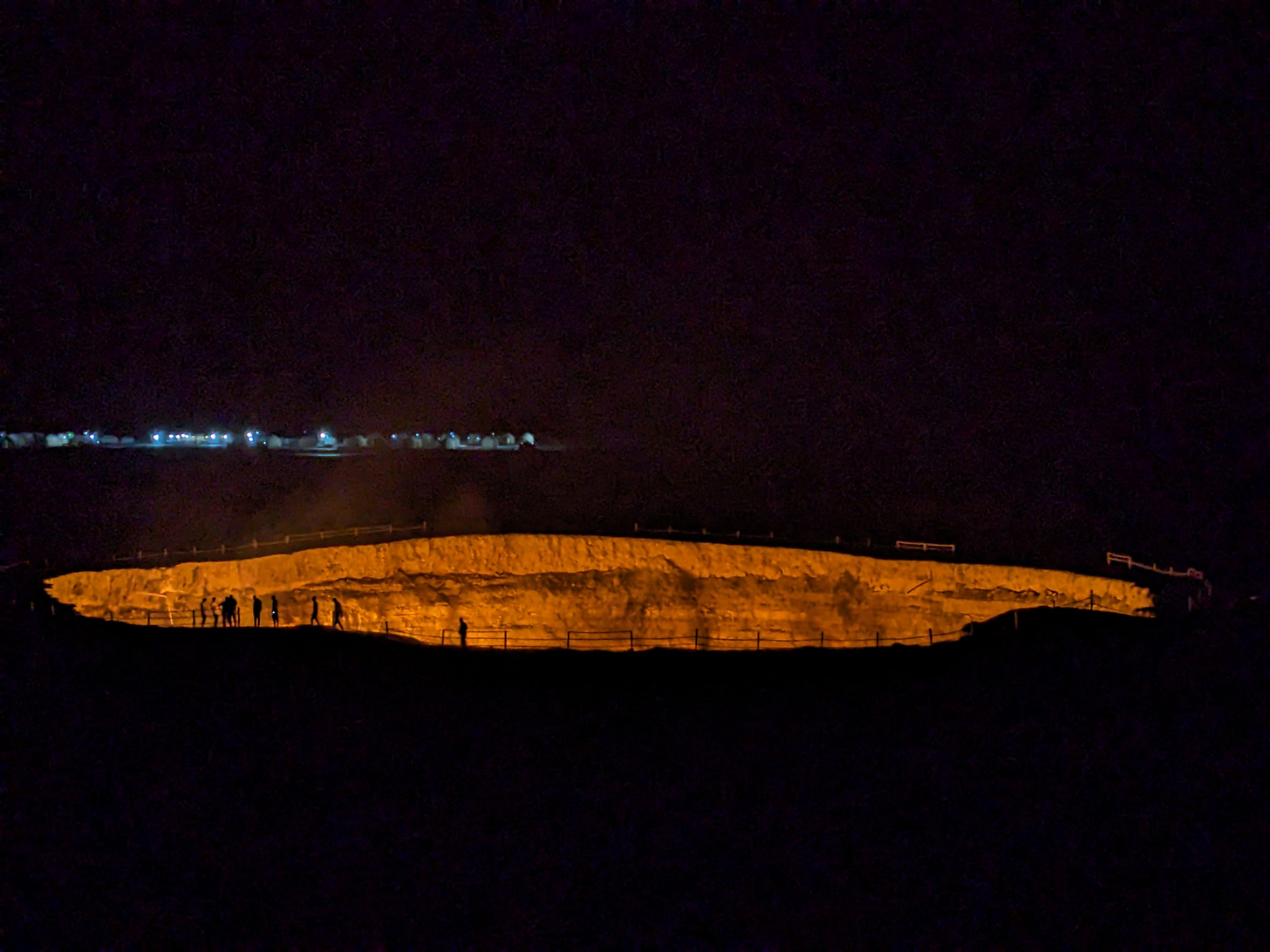
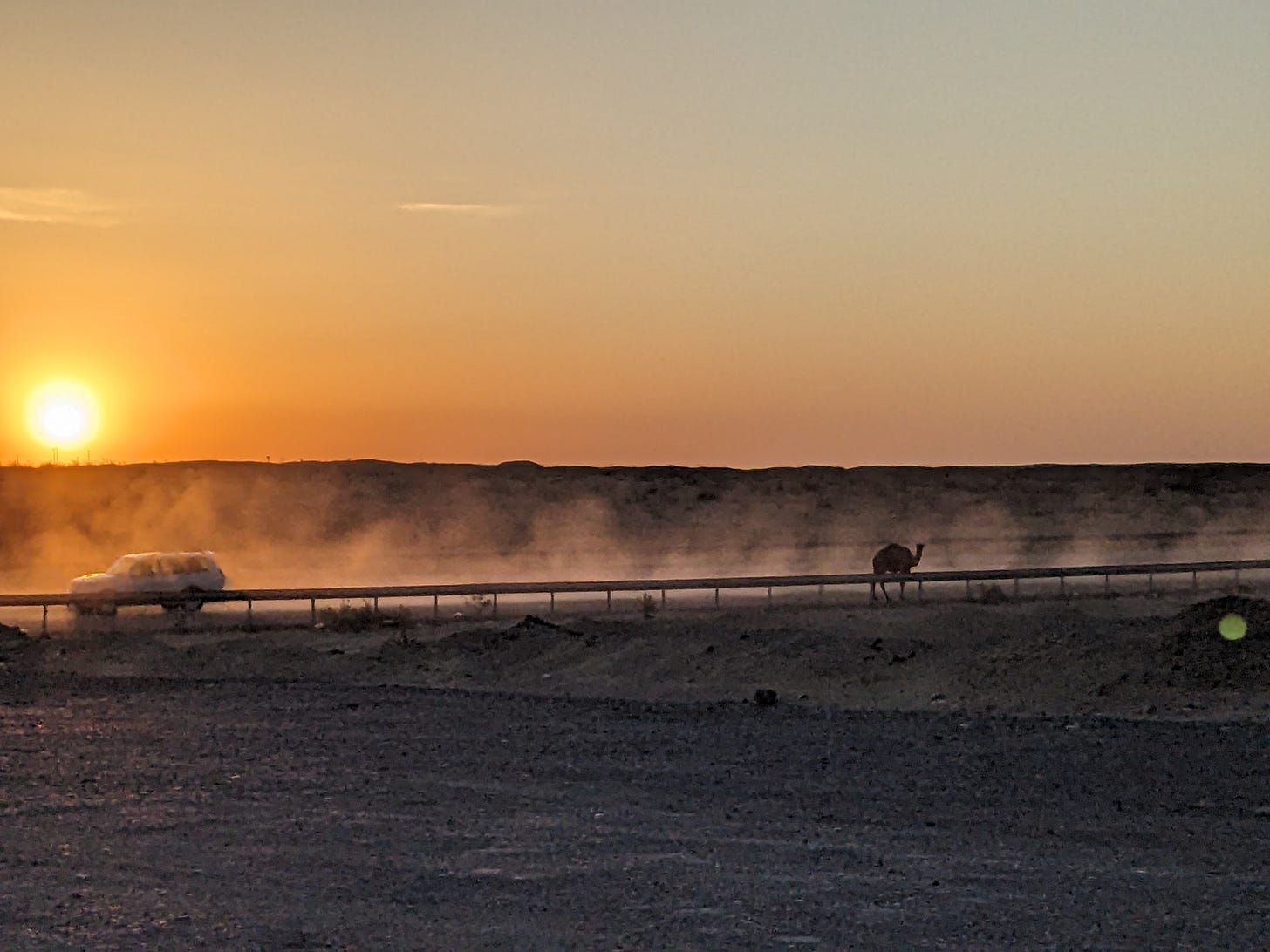
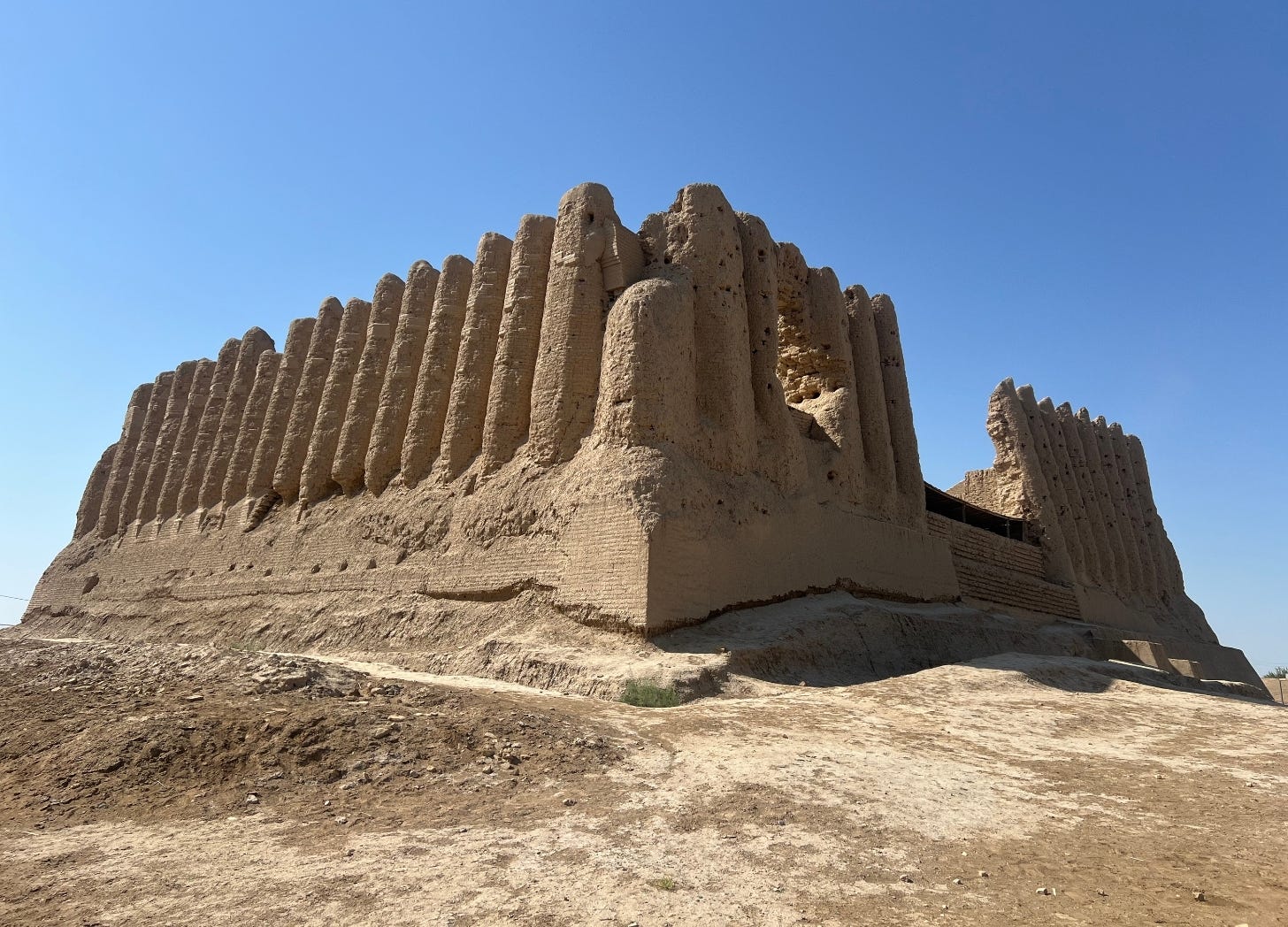
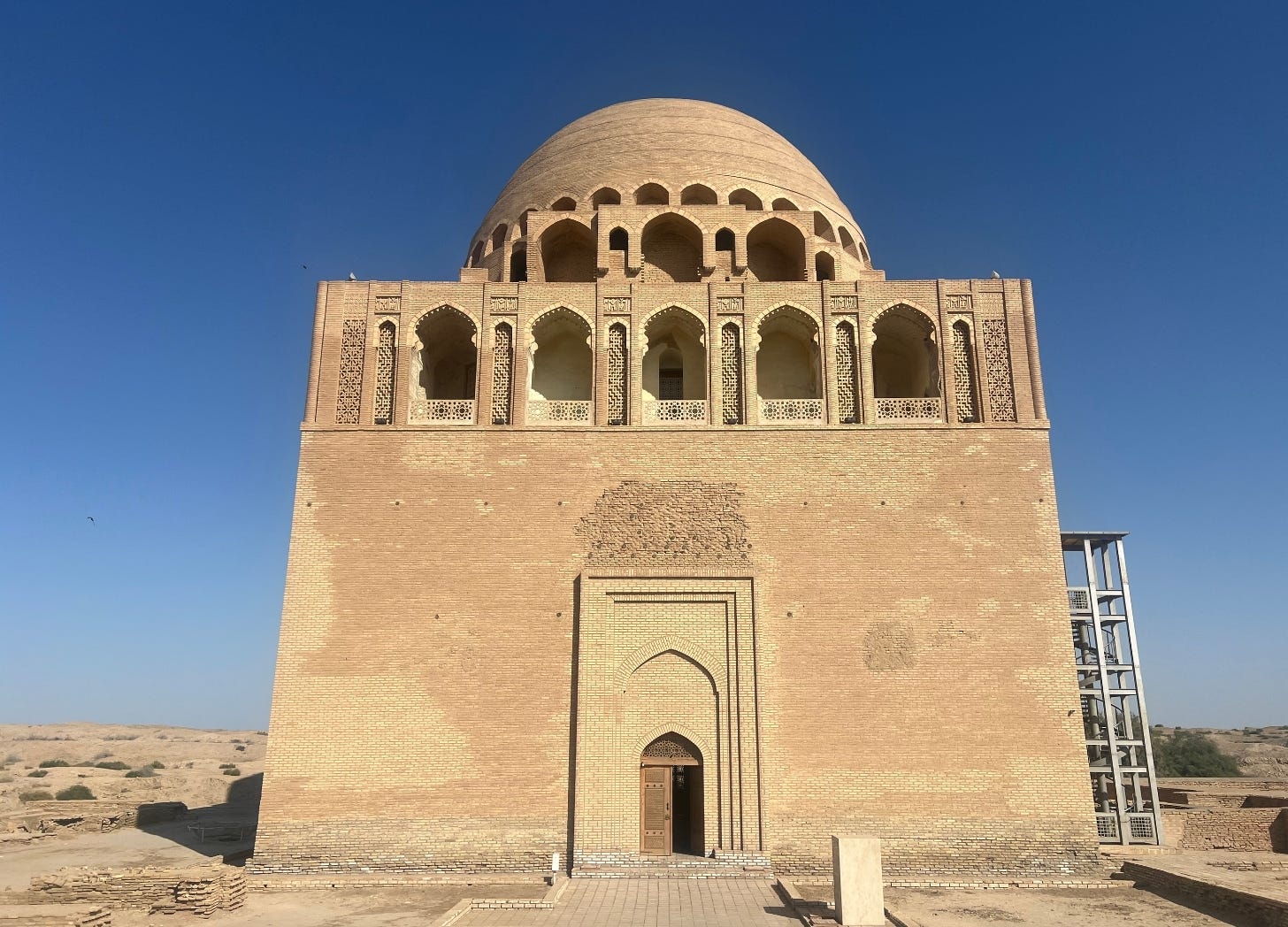
Erin, this was riveting — and your contrasts between the Gates of Hell and Merv really brought Turkmenistan’s contradictions to life. My husband Nigel and I slow travel full-time, and we’ve felt that same dissonance in places where history and spectacle coexist uneasily — beauty layered over loss, silence sitting right beside showmanship.
Your reflections on “flash over substance” hit especially hard. It’s such a universal theme in travel — what a country chooses to preserve versus what it lets fade. Thank you for taking us somewhere few will ever see and for asking the harder questions along the way. -Kelly
Nice trip report! Turkmenistan has been on my list for a while. Just out of curiosity, do you know why the majority of your fellow applicants were denied entry?